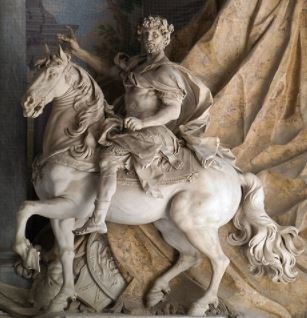
Yet the "one thing at a time" approach has its downsides as well as its advantages. The combination of tight chronological focus and meticulously source-based analysis, moreover, lends the book a certain bittiness, or fragmentation. Notwithstanding this variety of written sources, the traditional material of the historian acts as undisputed king for most of the book, with archaeology, numismatics, and so on serving as counselors rather than as co-rulers. For example, in Chapter 10, she analyzes annals, abbatial gesta, miracle stories, letters, conciliar records, sacramentaries, legal collections, and theological tracts. Within the written source material, Nelson switches with equal facility between many different genres. She brings in material evidence at points, and in a number of passages-notably the discussion of the archaeology of Aachen (356-359)-nonwritten sources receive the same kind of detailed analysis accorded to (for instance) letters or poetry. The material that Nelson consults is largely textual. Her interventions into extant historiographical debates have a light touch, universally thoughtful but calculated not to drown a casual reader in technicalities. The book uses a lot of sources, and Nelson's commentary on them is both insightful and clearly written. Given the book's tight focus on the sources, however, the first order of business is to discuss how it handles them.

In her introduction, Nelson justifies such a strictly sequential approach as a ploy to avoid teleology, and in this respect, she certainly succeeds, though the book's organization does give it something of the feel of a textbook (see below). This material is presented chronologically rather than thematically. Prominent throughout the book are contemporary and near-contemporary sources, often given in lengthy translated extracts and always accompanied by learned critique.

It is a measure of both the relative profusion of the sources and Nelson's profound command of them that a biography of a single early medieval figure can indeed proceed for several hundred pages, beginning with Charles' early life, continuing with his accession to sole rule of the Franks, his wars and conquests, his attempts to reform Frankish letters and manners, his court and family life, and finally his death and burial. This is no literary affectation: Over the course of the next several hundred pages, Nelson tells the story of the Frankish king and Emperor Charles the Great in precisely this fashion. , and go on until you come to the end: then stop" (7). Quoting Lewis Carroll, Nelson opens her biography of Charlemagne with the solemn advice of the King of Hearts, "Begin at the beginning.


 0 kommentar(er)
0 kommentar(er)
